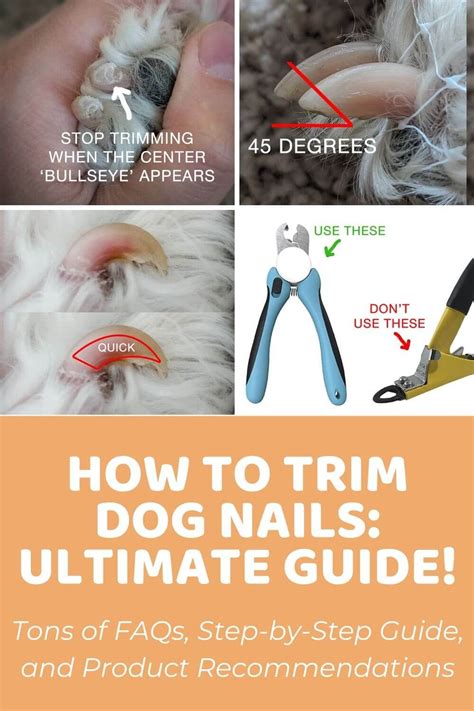How To Cut Your Dog's Nails: A Step-by-Step Guide
Trimming your dog's nails might seem daunting, but with the right approach and tools, it can become a manageable and even enjoyable experience for both you and your furry friend. This guide will walk you through the process, offering tips and tricks to ensure a safe and successful nail trim.
Why Trim Your Dog's Nails?
Overgrown nails can cause a variety of problems for your dog. Long nails can:
- Lead to discomfort: Imagine walking around with excessively long fingernails – it's not comfortable! Long nails can make it painful for your dog to walk, run, and even stand.
- Affect their gait: Overgrown nails can cause changes in your dog's gait, leading to joint problems and potential lameness.
- Become ingrown: Ingrown nails are painful and can become infected, requiring veterinary attention.
- Crack or break: Long nails are more prone to cracking or breaking, leading to bleeding and discomfort.
Regular nail trims are crucial for your dog's overall health and well-being.
Gathering Your Supplies
Before you begin, make sure you have everything you need within easy reach. This will help to keep the process smooth and efficient. You'll need:
- Appropriate nail clippers: There are several types available, including guillotine clippers and scissor clippers. Choose the type that you feel most comfortable using. Scissor clippers are generally recommended for beginners.
- Styptic powder or pencil: This is essential to stop any bleeding in case you accidentally cut the quick (the pink part of the nail containing blood vessels and nerves).
- Treats: Positive reinforcement is key! Have plenty of high-value treats ready to reward your dog for good behavior.
- Towel (optional): A towel can help to restrain your dog if needed, especially if they are nervous or fidgety.
Step-by-Step Guide to Trimming Your Dog's Nails
-
Introduce your dog to the clippers: Let your dog sniff and investigate the clippers before you start. Associate the clippers with positive experiences by giving treats.
-
Find a comfortable position: Have your dog sit or lie down in a comfortable position. You want to be able to easily access their paws.
-
Hold the paw gently but firmly: Gently but firmly hold your dog's paw. Avoid squeezing too tightly, as this can cause discomfort and make your dog more resistant.
-
Locate the quick: The quick is the pink part of the nail that contains blood vessels and nerves. Avoid cutting into the quick, as this will cause bleeding and pain. In dark-colored nails, the quick can be difficult to see. Start by trimming small amounts at a time, being cautious.
-
Trim the nail: Use sharp clippers and make clean, swift cuts. It's better to trim a little at a time and return for more if needed.
-
Reward your dog: Immediately reward your dog with praise and treats after each nail is trimmed.
-
Repeat for all nails: Repeat the process for all nails on each paw. Take breaks if needed, especially if your dog is becoming stressed or anxious.
Dealing with a Quicked Nail
If you accidentally cut into the quick, don't panic. Apply styptic powder or a styptic pencil to the bleeding nail immediately. This will help to stop the bleeding quickly. Keep your dog calm and reassure them. If the bleeding is excessive or doesn't stop, consult your veterinarian.
Tips for Success
- Start slowly: Don't try to trim all the nails at once, especially if your dog is new to nail trims. Start with one or two nails per session and gradually increase the number as your dog becomes more comfortable.
- Make it a positive experience: Use positive reinforcement and lots of treats to create a positive association with nail trimming.
- Be patient: It takes time and patience to get your dog used to having their nails trimmed. Don't get discouraged if it doesn't go perfectly the first time.
- Consult your veterinarian or groomer: If you are unsure about how to trim your dog's nails, consult your veterinarian or a professional groomer. They can show you the proper technique and help you avoid injuring your dog.
By following these tips and techniques, you can learn how to safely and effectively trim your dog's nails, ensuring their comfort and overall health. Remember, consistency is key! Regular nail trims will prevent future problems and maintain your dog's well-being.
